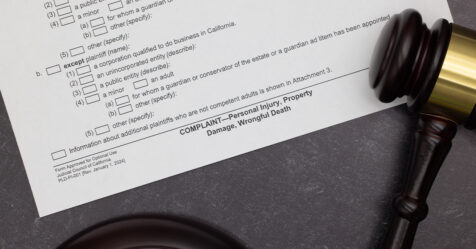Floor care can seem a never-ending task. Floors take a lot of wear and tear and if they aren’t in pristine condition, they attract the notice of building owners, facility managers, and building visitors. If a facility’s floors look dirty, dingy, spotted, and stained, who gets the call? You do.
When new flooring is installed in your facility—whether carpet, luxury vinyl, polished travertine marble, or any other flooring type, you are responsible for its condition once the installer leaves. Flooring represents a major investment by the building owner. Don’t let a gap in floor care diminish the value of this asset.
Consider this scenario
At first glance, the newly installed floor may look like any other floor you maintain. You determine you have the procedures to maintain it. A typical customer contract may require you to regularly scrub, and perhaps routinely strip, a hard floor. For carpeting, the scope of work requires vacuuming and shampooing, or steam cleaning as needed—quarterly or semi-annually. You instruct your crew to scrub and recoat the floor, or use a pre-spot treatment before cleaning the carpet.
After your crew finishes the job, your supervisor tells you the floor doesn’t look right. You inspect the floor and, sure enough, something looks wrong. You see that the floor is groping on the finish. The color of the carpet looks different than it was before cleaning.
You make the dreaded call to your customer to obtain the installer’s phone number. Your customer mentions the flooring warranty and the possibility of a product defect. So, you call the manufacturer and explain the problem. The first question the manufacturer asks is whether you reviewed the suggested care and maintenance instructions. Next, the manufacturer asks what chemical you used. You discover you used the wrong product and this action voided the product warranty. Now you need to replace the floor. If you are a small business owner, this unexpected cost could have financial ramifications to your cash flow.
The replacement of any floor is paid from your profits. If you are the project manager, this management oversight on your part places your continued employment in jeopardy. You could lose the contract and still pay for the damage.
Avoid costly mistakes
What could you have done to avoid this situation?
First, recognize that each floor has its own care and maintenance instructions provided by the manufacturer. While the floor is being installed, obtain the name of the manufacturer from the installer. Make sure you get the correct name of the flooring, perhaps even a SKU number of the product.
Second, with your current chemical list in hand, call the manufacturer’s technical support line. Request a care and maintenance specifications sheet on the flooring. Then review the chemicals you are currently using to maintain the flooring in the facility. The products may or may not be suitable for this new floor. Find out exactly what products and equipment are needed to care for the new floor. Document your conversation, including a date, time, and the name of the person who assisted you.
Review your floor care chemical inventory to determine if your current products are compatible to the floor. If the technical support person says you can use your own chemicals, I would ask for a letter confirming this and stating that use of these chemicals will keep the warranty valid.
Confirm product-use instructions, proper dilution measurements, and correct maintenance processes. All this information will be in the flooring care and maintenance instructions from the manufacturer.
Don’t forget to address safety
Remember, if you introduce a new chemical into your jobsite you will need to have a current safety data sheet (SDS), provide personal protective equipment (PPE) to your staff, and train workers on the proper use of the new chemical. Look to the guideline in your organization’s hazard communication plan.
When I was in project management, I had a building-by-building file of flooring and care/maintenance instructions. If I had questions, I called and asked for the manufacturer’s recommendations then documented the conversation. If anything went wrong in my cleaning process, I could defend myself and my customer.
Floor products fail. But if the failure is due to you performing the wrong care and maintenance, then you will have to admit to your mistake and pay the costs. I kept service documents to support the date and times when our staff performed care and maintenance on flooring. That may have been a little overboard, however, it enabled me to provide documentation of service whenever a customer asked.
I hope I have provided insight into this costly contractual care gap. A lack of knowledge can cause your actions to void the floor warranty. This cost is real, in terms of both money and the ruined image of your company. Take simple steps—make the call, be aware, and always find out the care and maintenance instructions—before you begin the cleaning process on any new flooring.




